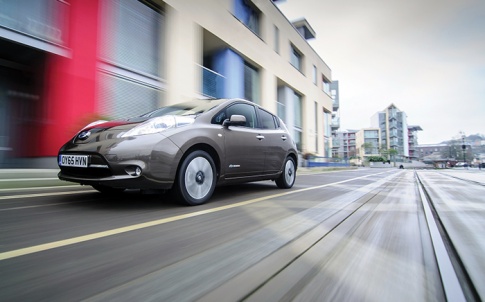 Leading environmental scientist Prof Roy Harrison examines whether EVs will actually improve air quality in the UK.
Leading environmental scientist Prof Roy Harrison examines whether EVs will actually improve air quality in the UK.
Road traffic has had a bad press in recent times over its influence on air pollution. Current estimates are that air pollution in the UK is associated with around 40,000 premature deaths per year, which exceeds the number of deaths in road traffic accidents by more than a factor of 20.
Hence this is an important public health problem, but is it solely due to road traffic, and will electric vehicles provide the necessary solution?
As with many environmental questions, the issues are not black and white. There are two air pollutants that are largely responsible for the excess mortality and hospital admissions associated with air pollution exposures, which are nitrogen dioxide (NO2) and particulate matter. Measures recently announced by the government are intended to address NO2 levels, which widely exceed health-based air-quality guidelines and the EU Limit Value.
Most outdoor exposure to NO2 arises from tailpipe emissions from road traffic of both NO2 and its fellow oxide of nitrogen, nitric oxide. Other sources such as fossil-fuel power stations also emit oxides of nitrogen but these are relatively dilute when they reach ground level. Oxides of nitrogen are a product of high-temperature combustion processes; consequently, a switch to electric vehicles would wholly eliminate emissions from the vehicles themselves, although there would be enhanced emissions from power stations if burning fossil fuels.

The case of particulate matter is more complex. Tailpipe emissions of particles, mainly from diesel engines, impact significantly on urban air quality but are not the sole consequence of road vehicles. The oxides of nitrogen emitted mainly from diesels are converted slowly in the atmosphere to nitrate particles, which contribute to the atmospheric concentration of fine particulate matter referred to as PM2.5.
The other source from road traffic comes from non-tailpipe emissions that arise from the wear of brakes, tyres and road surface, and from the suspension of road-dust particles in the wake of passing vehicles. These sources of particles are not currently the subject of regulatory controls and they now exceed the exhaust emissions from the vehicle fleet.
This situation has evolved over recent years; the Euro 5 and Euro 6 diesels that have been on sale since 2011 are fitted with diesel particle filters and have greatly reduced exhaust emissions of particulate matter. There have been numerous studies of the effects of airborne particles on human health, many of which in recent years have tried to differentiate the toxicity of particles of different composition and size arising from various sources. These do not paint a consistent picture and the current advice from the government’s advisory committee, COMEAP, is that all should be treated as being of equal toxicity per unit mass.
So will there be a benefit from electric vehicles? As noted above, diesel vehicles currently on sale are fitted with particle traps and emit low levels of particulate matter, as do petrol vehicles. Hence the introduction of electric vehicles will have relatively little influence on exhaust emissions compared to a fleet of current-technology diesels.
The situation with regard to non-exhaust emissions is more complex. It is likely that emissions of brake-wear particles from electric vehicles will be greatly reduced because much of the deceleration will be achieved through regenerative braking as opposed to the application of mechanical brakes. However, it has been argued that, due to their heavy load of batteries, electric vehicles will be heavier than internal combustion engine vehicles and, if this is the case, they would be expected to generate higher emissions of particles from tyre and road-surface wear and from suspension of road-surface dusts.
Yet current evidence suggests that not all electric vehicles are heavier than their fossil-fuel counterparts, so the change in fleet-averaged emissions is uncertain.
There are clear solutions to the brake-wear particle issue through regenerative braking on electric vehicles, use of low-emission materials (discs and pads) and the development of particle collection devices for disc brakes. However, the solution for tyre/road-surface wear has received far less attention and will require extensive research on the influence of the tyre compound and the road-surface material and texture upon particle generation and emissions.
Studies of road-surface washing have shown a substantial reduction in suspended dust particles, but lasting for only a few hours. Dust-suppressant coatings such as calcium magnesium acetate have also been tested as a way of sticking particles to the road surface, but these too are of limited efficiency. Hence solutions to the dust resuspension source are currently elusive.
Prof Roy Harrison OBE, FRS works at the School of Geography, Earth & Environmental Sciences, University of Birmingham




JLR teams with Allye Energy on portable battery storage
This illustrates the lengths required to operate electric vehicles in some circumstances. It is just as well few electric Range Rovers will go off...